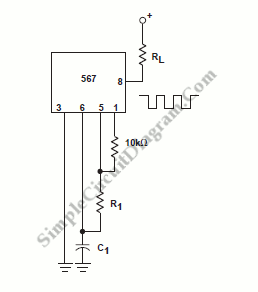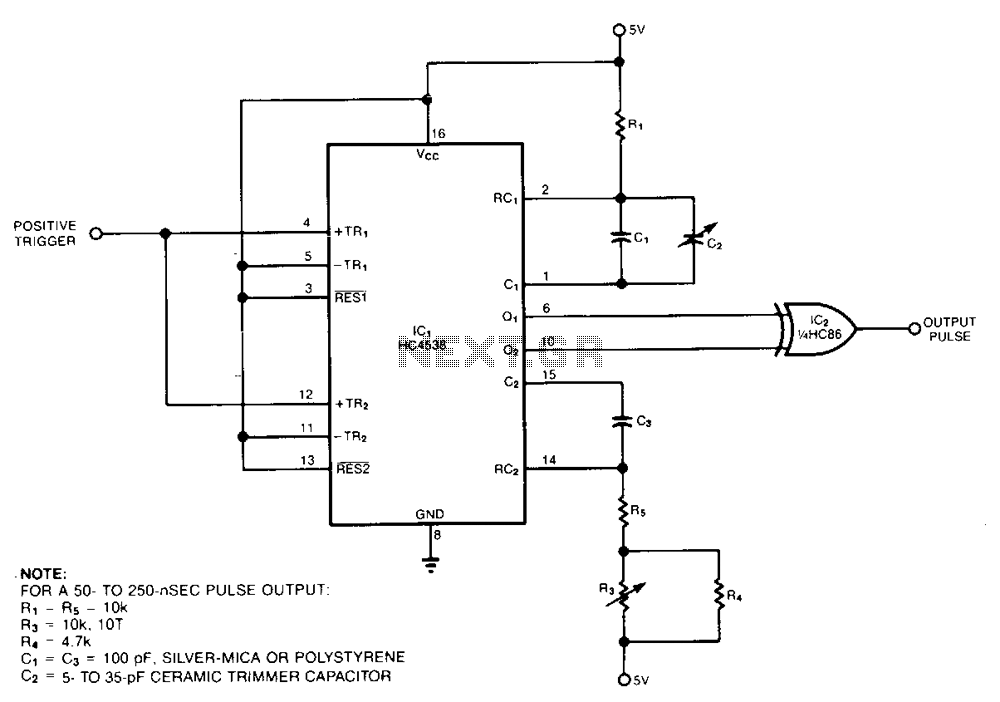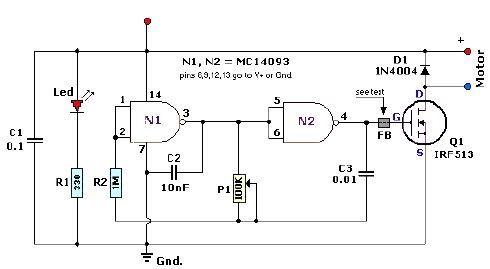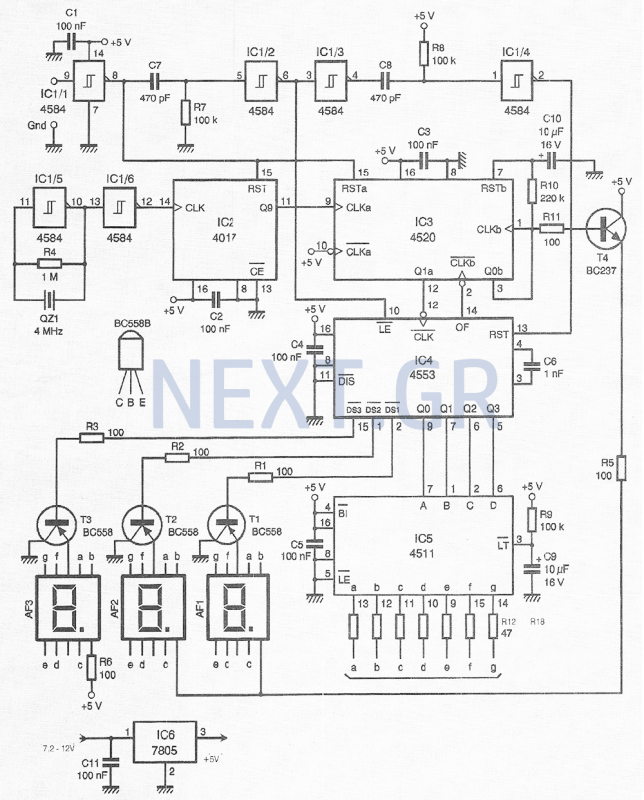
Opto-Coupled Discrete Pulse Stretcher
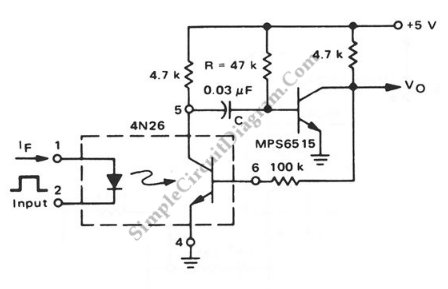
This is a pulse stretcher circuit utilizing an optocoupler. The circuit employs a 4N26 optocoupler in conjunction with a standard one-shot circuitry.
The pulse stretcher circuit is designed to elongate the duration of an incoming pulse signal, which is particularly useful in digital signal processing applications where signal timing is critical. The use of the 4N26 optocoupler provides electrical isolation between the input and output, enhancing safety and reducing noise interference from the input signal.
In this configuration, the pulse stretcher operates by first detecting the incoming pulse through the input terminal, which is connected to the LED side of the optocoupler. When the LED is activated by the incoming pulse, it generates a corresponding output signal on the phototransistor side of the optocoupler. The output from the phototransistor is then fed into a one-shot circuit, typically implemented using a monostable multivibrator, which produces a pulse of a predetermined width regardless of the duration of the input pulse.
The one-shot circuit can be adjusted to set the desired pulse width, allowing for flexibility in various applications. The output pulse can be further processed or utilized in other digital circuits, ensuring that the timing requirements are met.
Overall, this pulse stretcher circuit is an effective solution for extending pulse durations while maintaining signal integrity and isolation, making it suitable for a wide range of electronic applications.This is a pulse stretcher circuit using optocoupler. This circuit uses a 4N26 opto-coupler combined with a standard one-shot circuitry. This circuit is.. 🔗 External reference
The pulse stretcher circuit is designed to elongate the duration of an incoming pulse signal, which is particularly useful in digital signal processing applications where signal timing is critical. The use of the 4N26 optocoupler provides electrical isolation between the input and output, enhancing safety and reducing noise interference from the input signal.
In this configuration, the pulse stretcher operates by first detecting the incoming pulse through the input terminal, which is connected to the LED side of the optocoupler. When the LED is activated by the incoming pulse, it generates a corresponding output signal on the phototransistor side of the optocoupler. The output from the phototransistor is then fed into a one-shot circuit, typically implemented using a monostable multivibrator, which produces a pulse of a predetermined width regardless of the duration of the input pulse.
The one-shot circuit can be adjusted to set the desired pulse width, allowing for flexibility in various applications. The output pulse can be further processed or utilized in other digital circuits, ensuring that the timing requirements are met.
Overall, this pulse stretcher circuit is an effective solution for extending pulse durations while maintaining signal integrity and isolation, making it suitable for a wide range of electronic applications.This is a pulse stretcher circuit using optocoupler. This circuit uses a 4N26 opto-coupler combined with a standard one-shot circuitry. This circuit is.. 🔗 External reference

